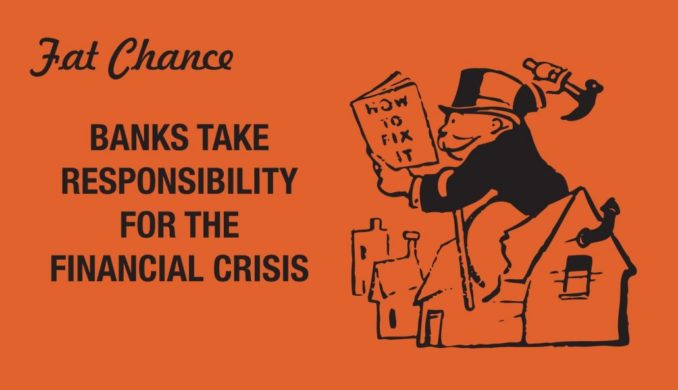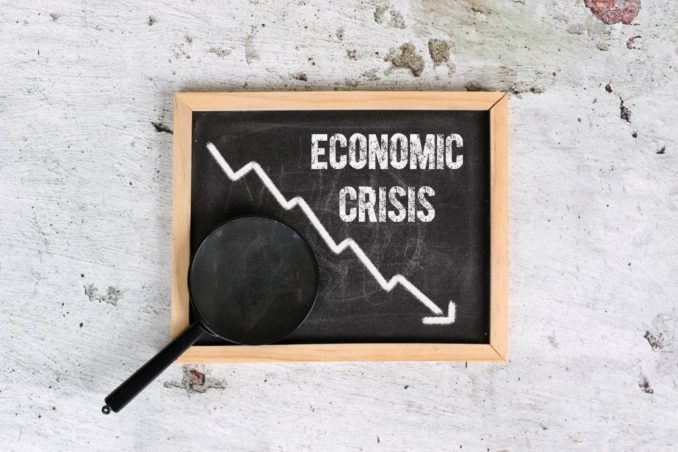OK Puffins
Hands up those who think the “pandemic” was used as cover for a financial/energy crisis.
Well, those 97% who’ve donned their tin foil hats & agreed with the premise might also ask themselves just why such a cover be necessary ? After all, we’ve had financial crises in the past and are likely to have others in the future, so why would a 2019/2020 financial crisis need disguising?

Come with me – if you will – back to 2019. Between 22nd and 24th August, the world’s central bankers met in Jackson Hole, Wyoming. The FT covered the meeting & reported that “for the world’s central bankers gathered in Jackson Hole, there was a sense that things would never be the same again”. What a prescient statement, how correct they were. The developed world had experienced a “regime shift” in economic conditions said James Bullard, president of the St Louis Federal Reserve. “Something is going on, and that’s causing I think a total rethink of central banking and all our cherished notions about what we think we’re doing. We just have to stop thinking that next year things are going to be normal,” said Bullard. Interest rates remained stubbornly low and questions were being asked as to the future of the dollar as the world’s reserve currency. Their old tools no longer worked to shape the economic environment. According to Robert Kaplan, president of the Dallas Fed, central bankers were dealing with a problem that monetary policy did not cause and could not fix. Mark Carney, the Governor of the Bank of England at the time, “made the radical suggestion that a private or state-run digital currency could serve as a global counterbalance to the dollar”. However there was acknowledgement that “there was no realistic mechanism to decouple the global economy from the US dollar in the short term”. Central bankers were worried. They were worried their monetary stimulus tools no longer worked and more importantly (for them) they were worried central banks might lose their control & independence. But don’t worry, they had a plan………..
The same month, BlackRock – the worlds largest & most well “connected” financial investment company – produced a document for discussion called ‘Dealing with the next downturn – From unconventional monetary policy to unprecedented policy coordination’. Like the central bankers, BlackRock was also concerned. They warned that monetary policies were almost exhausted as global interest rates plunged towards zero or below. There had been a decade of unprecedented monetary stimulus but inflation remained stubbornly low. They thought it was even more unusual to see a drop in inflation expectations in the late-cycle stage when concerns would typically focus on overheating. Interest rates were as low as they could get (effectively negative) and weren’t looking like they were going to move upwards any time soon. If a financial crisis were to happen (and things were looking that way in 2019) central banks would have no tools to deal with it. They estimated that they would need to drop interest rates by around -2% (more in a full blown recession) to deal with a downturn but with interest rates so low, that was impossible.
When monetary policy alone isn’t working, fiscal policy can step in to assist. Over the last 50 years or so monetary policy has been directed by the central banks whilst fiscal policy changes depending on the ‘democratically’ elected party at the time. Blackrock wanted more government borrowing and investing, especially in the low interest rate environment, but governments were just not playing ball. They argued that if governments borrowed more, this would push real interest rates towards or even above growth.
However, even with a change in fiscal policy, due to high debt to GDP ratios, all it would take would be a sudden spike in rates and the whole thing would come tumbling down. Fiscal tools would be useless as would the monetary tools discussed above. The paper said this sudden stop in fiscal policy space could happen if there was a temporary drying up of liquidity or losing reserve currency status.
It is acknowledged that if debt is on an unsustainable trajectory, the central bank can intervene by either increasing the monetary base by printing money or restarting QE but that this would cause runaway inflation at some point. As I mentioned above, the central banks were worried that their independence was under threat. BlackRock’s view was that in the next downturn central banks may lose their independent status and uncontrolled fiscal expansion would get worse.
Blackrock
There is growing political discontent across major economies – and central banks are one of the targets. Widening inequality has fostered a backlash against elites. There are many drivers of inequality, including at its root technology, winner-take-all dynamics and globalisation. 2008 and the resulting forced bailout of financial institutions deemed too big too fail has added fuel to this backlash. Not acting would have almost certainly led to a Great Depression-like outcome – much higher unemployment and even worse inequality. Yet that counterfactual provides no solace to those feeling left behind. And the monetary policy tools themselves might have increased inequality – and are certainly perceived to have done so – by pushing up the prices of assets owned by only a fraction of the population. Governments, not central banks, are ultimately accountable for issues of inequality and redistribution. And a greater use of fiscal policy tools is needed to offset the impact of central bank policies on inequality, including the impact of monetary policy. That is why we believe the boundaries between fiscal and monetary policy will continue to be blurred – and why a clear framework to mitigate this risk is needed. Without a clear framework, the political pressure will build on many fronts.
These guys (and girls) (and thems?) aren’t completely stupid. They could smell the anger in the air. Citizens were getting poorer whilst the elite were getting richer. Most people didn’t know exactly how this was happening but they had a good enough idea that it was due to bankers and corrupt politicians. This had already resulted in shock victories for Trump (in the US) and a Vote to Leave the EU (in the UK). Central bankers were worried that one more shock election combined with a crisis could result in an anti-establishment leader removing the central banks’ independent status to placate the angry mob.
How could they retain power and print lots of money whilst keeping the economy subdued so as not to cause panic or a crisis that they were in no position to deal with? An unprecedented coordination through a monetary-financed fiscal facility was needed.
Blackrock
Activated, funded and closed by the central bank to achieve an explicit inflation objective, the facility would be deployed by the fiscal authority.
Translation: the central banks would be fully in control the whole time but governments would do the dirty work.
After 2008, monetary and fiscal policies were working in opposite directions. BlackRock wanted to change this by using a ‘soft form of coordination’ where they would both provide stimulus. Central banks are easy to coordinate but how do you get all the Western governments to act in unison at once? When has that ever happened before?
Blackrock
An unprecedented response is needed when monetary policy is exhausted and fiscal space is limited.
The response they recommended was called ‘going direct’. This meant central banks finding ways to get central bank money directly in to the hands of the public and private sector spenders (‘helicopter money’). Importantly, this involved enforcing policy coordination so that the fiscal expansion does not lead to an offsetting increase in interest rates.
The suggested practical way of ‘going direct’ was as follows:
- Define unusual circumstances that would call for such unusual coordination;
- In those circumstances, an explicit inflation objective that fiscal and monetary authorities are jointly held accountable for achieving;
- A mechanism that enables nimble deployment of productive fiscal policy; and
- A clear exit strategy.
Furthermore, the size of the facility would be calibrated to achieve the inflation objective, which would INCLUDE making up for past inflation misses………
Two months later, Event 201 and the Wuhan Military Games began. In December we started to hear about a novel coronavirus. By March 2020 a full blown pandemic had been declared and the ‘unusual circumstances’ needed for ‘unusual coordination’ were in place…………….. Money printing around the western world went into overdrive.
Blackrock
Explicit monetary financing in sufficient size will push up inflation. Without explicit boundaries, however, it would undermine institutional credibility and could lead to uncontrolled fiscal spending.
Lockdowns ensured there were explicit boundaries. Whilst money was being force pumped into the system, the economy was being subdued which ensured there wasn’t an offsetting increase in interest rates and institutional credibility wasn’t undermined. In 2019 central bankers were panicking. A downturn was imminent and all of their tools were useless. They were powerless and risked losing their independence. Their main tool, interest rates, needed to rise and the only way to do this was if inflation was rising. There was no sign of this happening so they came up with a plan which would pump money into the system whilst keeping economies subdued. Once they could see inflation was starting to rise a clear exit strategy would be put in place. An example of an exit strategy could include the proclamation that Covid was no longer dangerous and/or the start of the Ukrainian war.
Since then, inflation has risen sharply (making up for past inflation misses) and so interest rates have risen, returning power back to the bankers. Almost as if their plan was enacted a worked but that is all a coincidence I’m sure.
But the best-laid plans of mice & men (and all that) hit the buffers in March 2023………….

© DJM 2023



